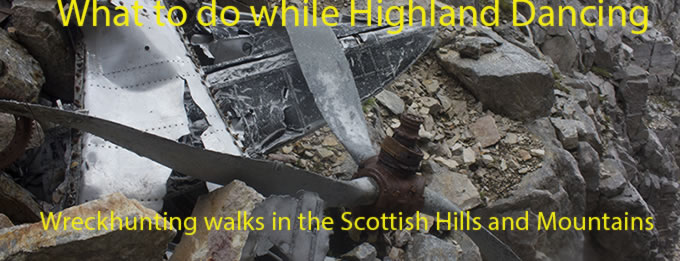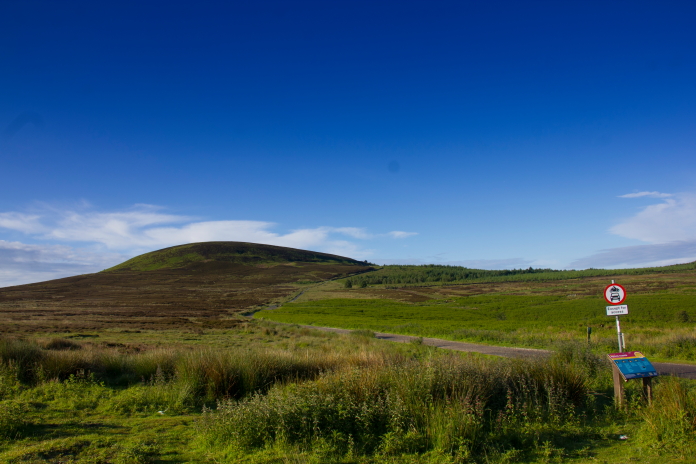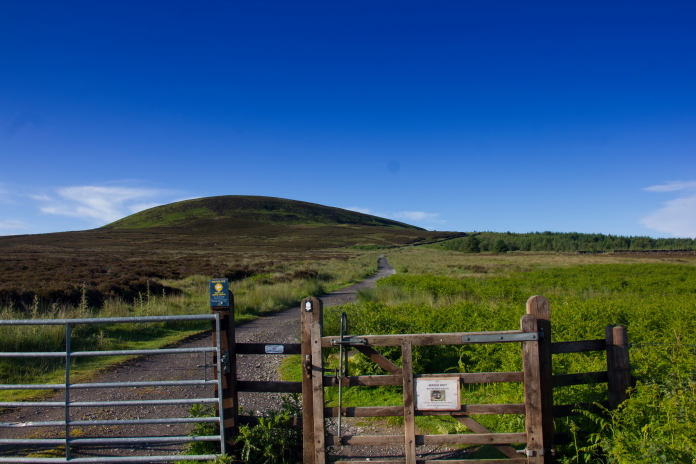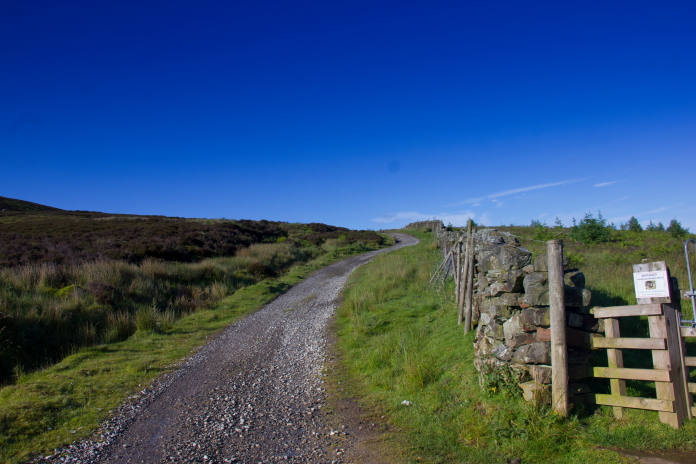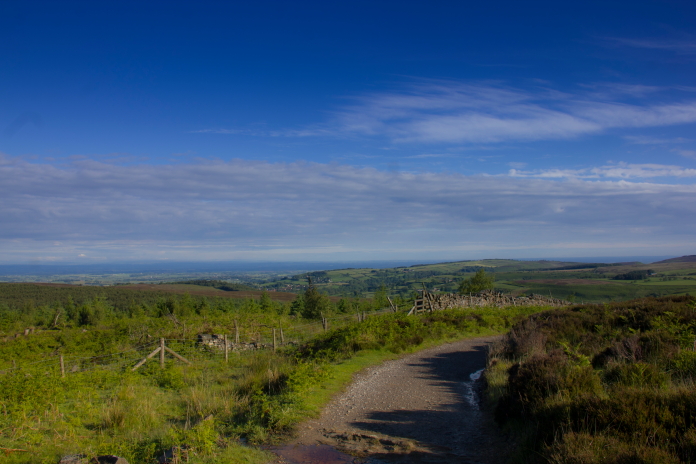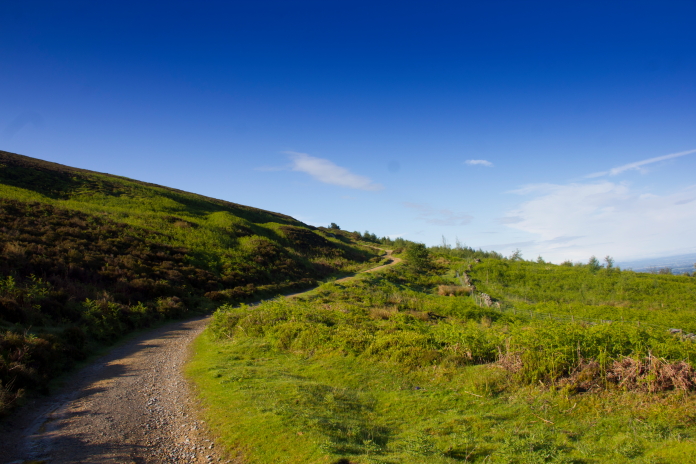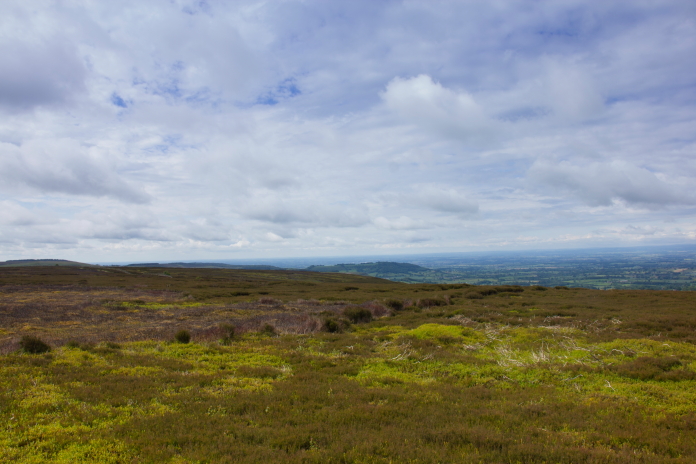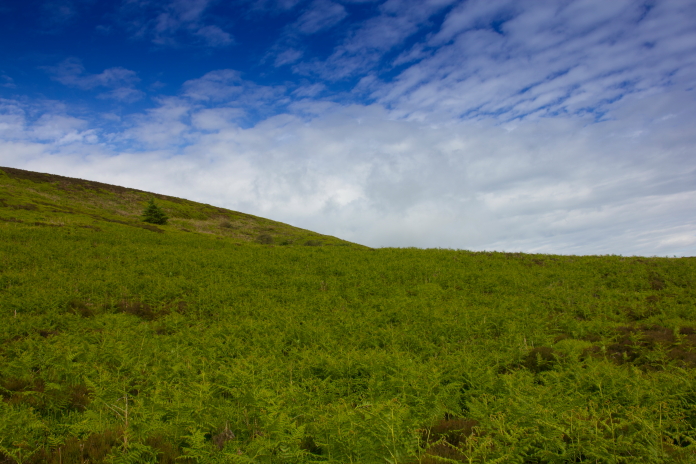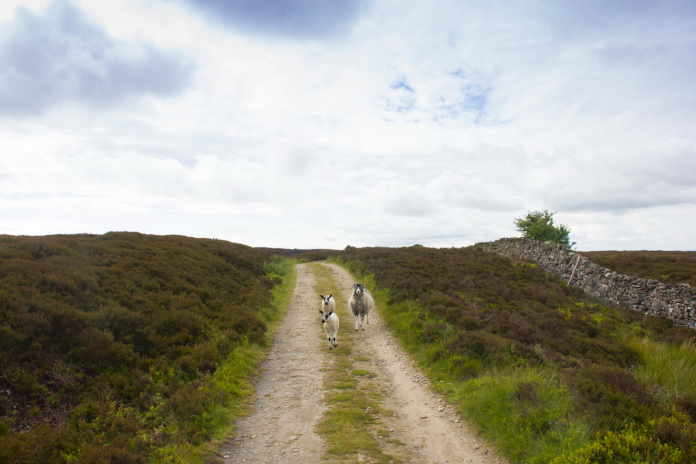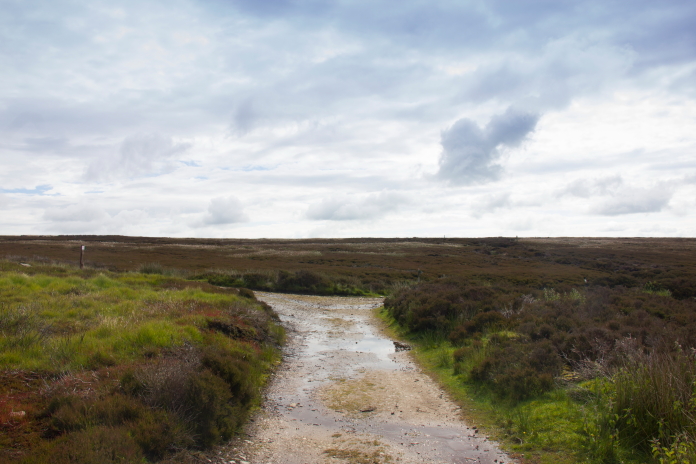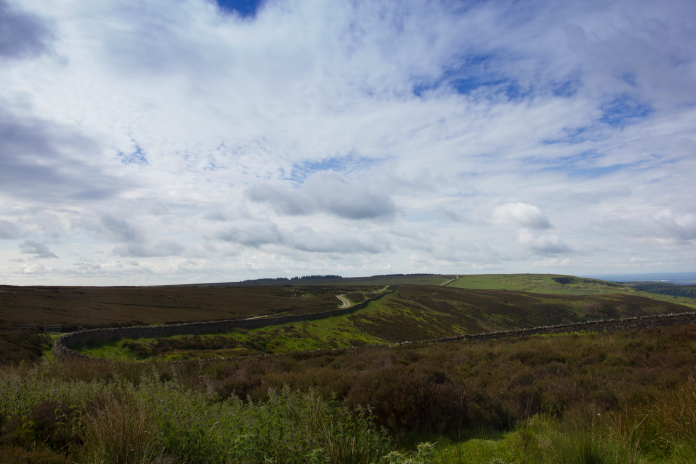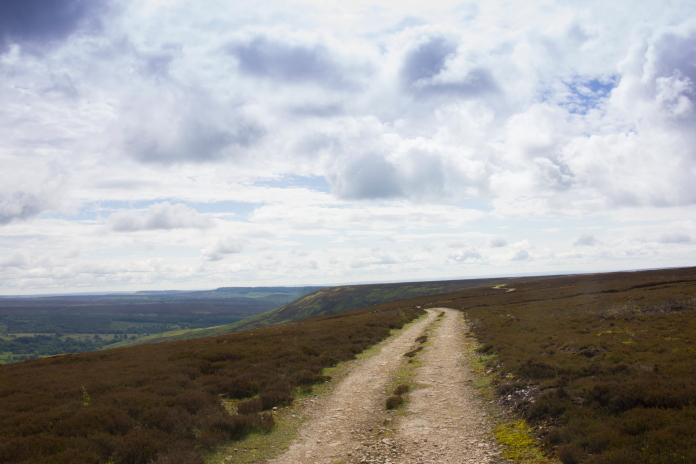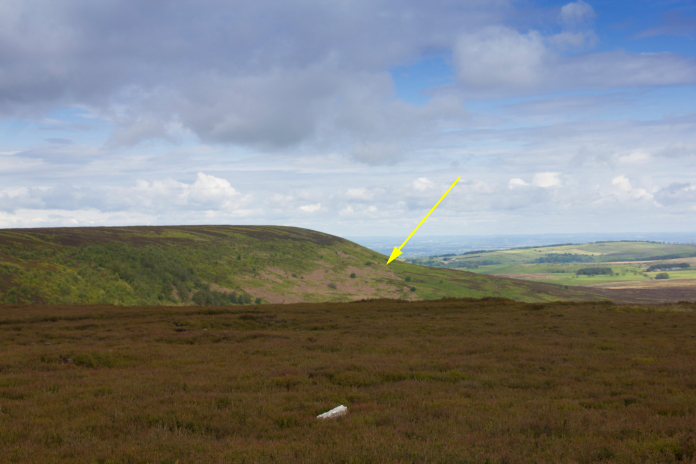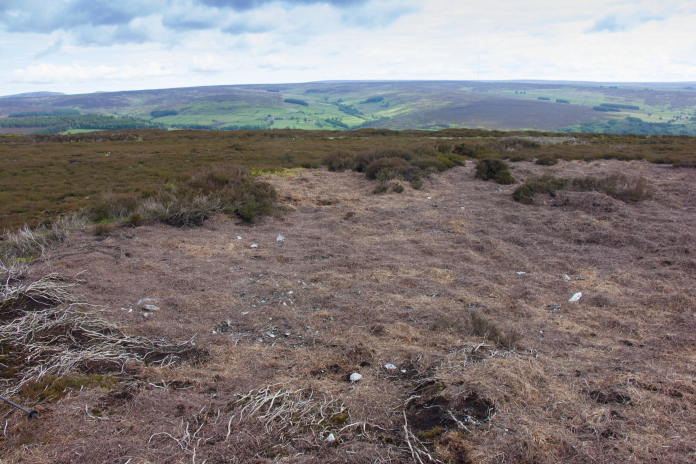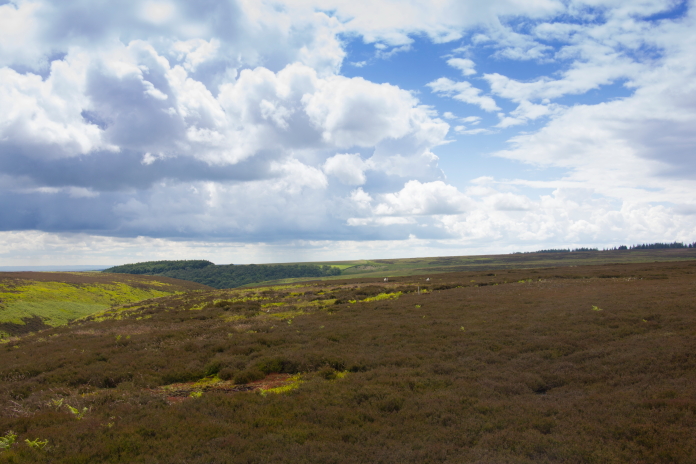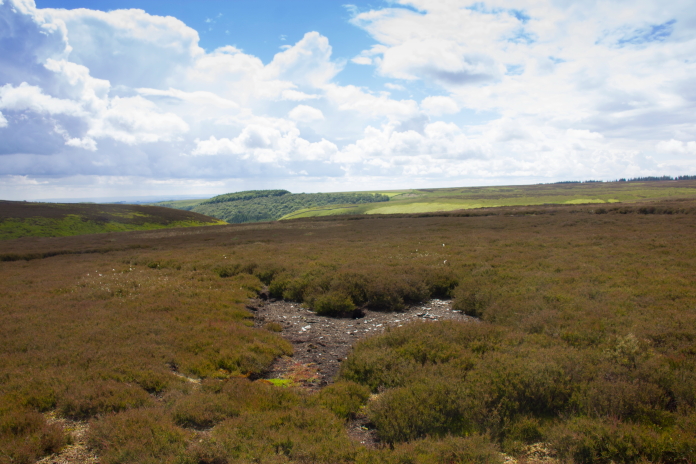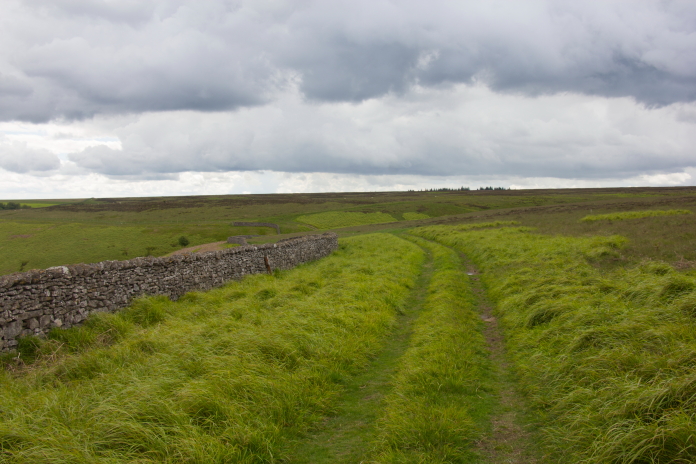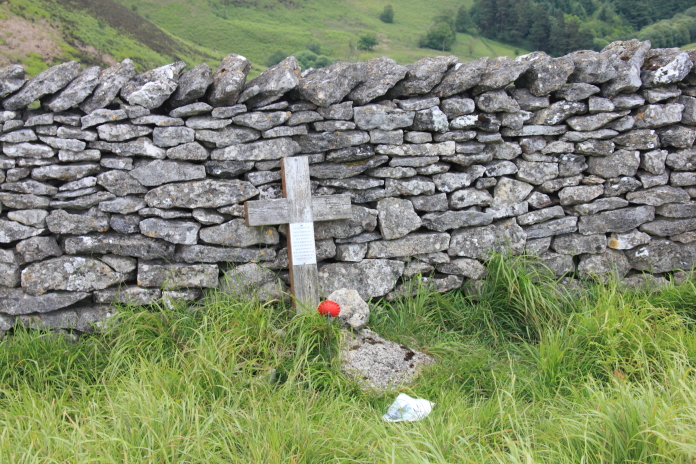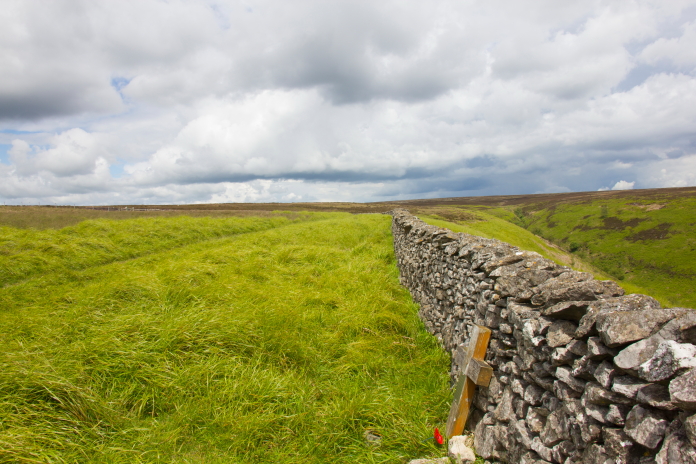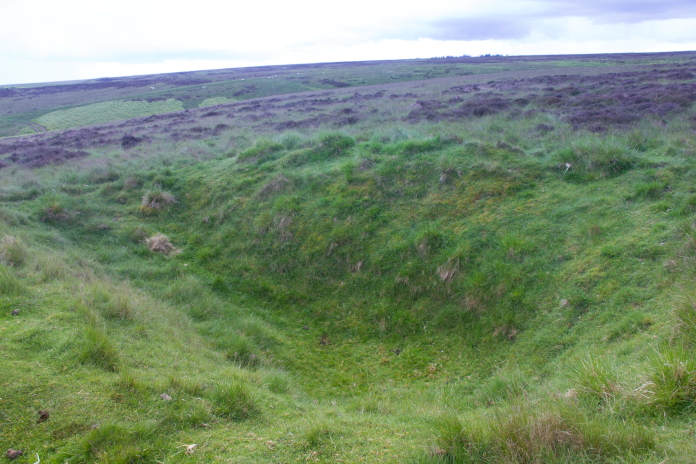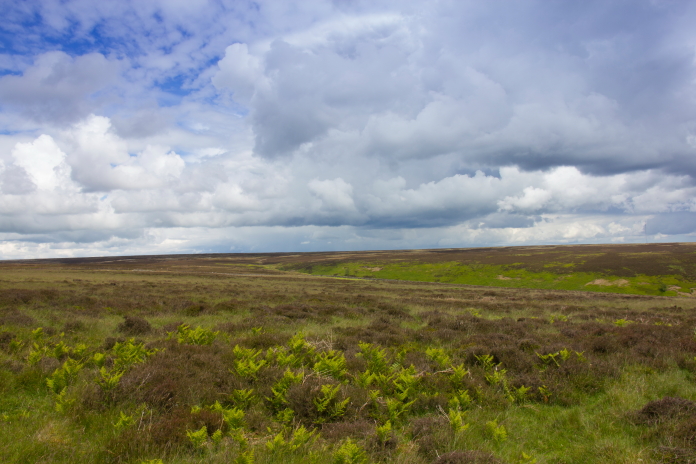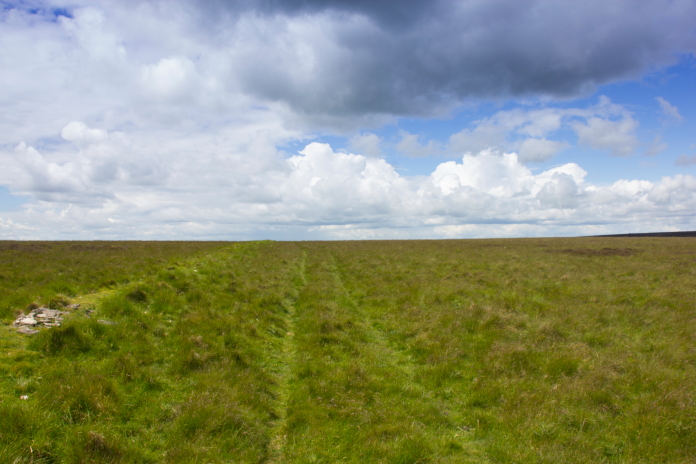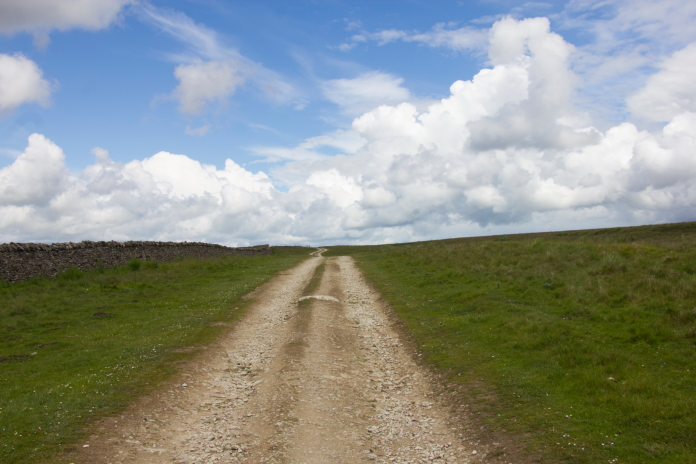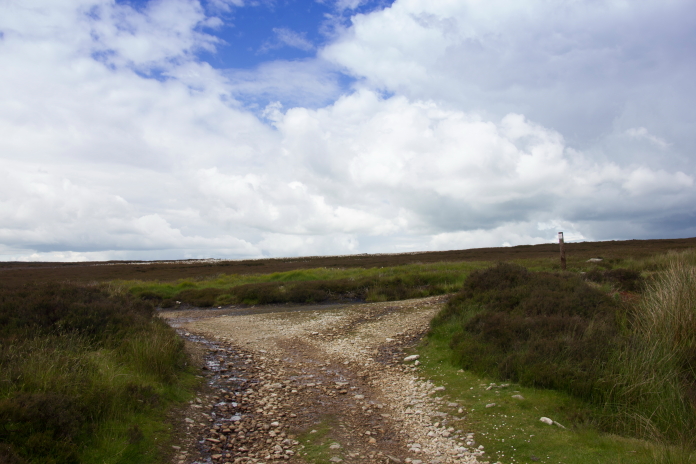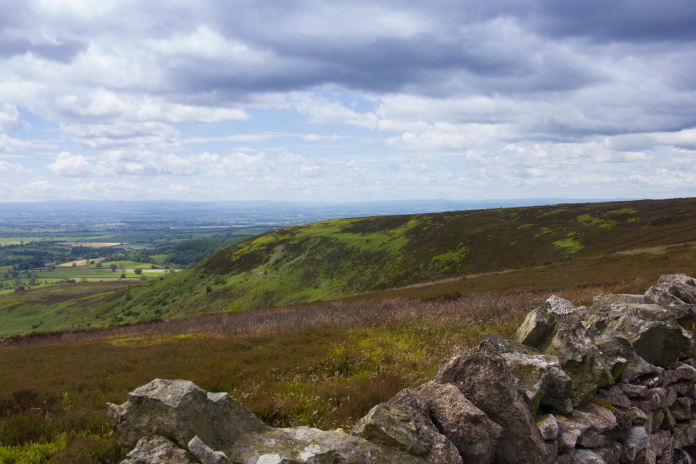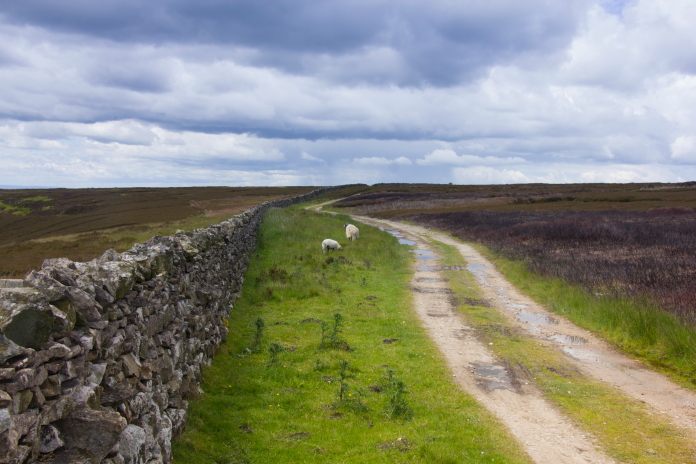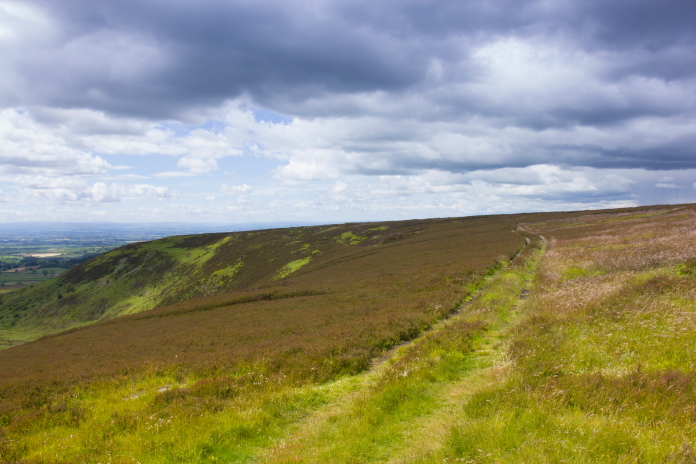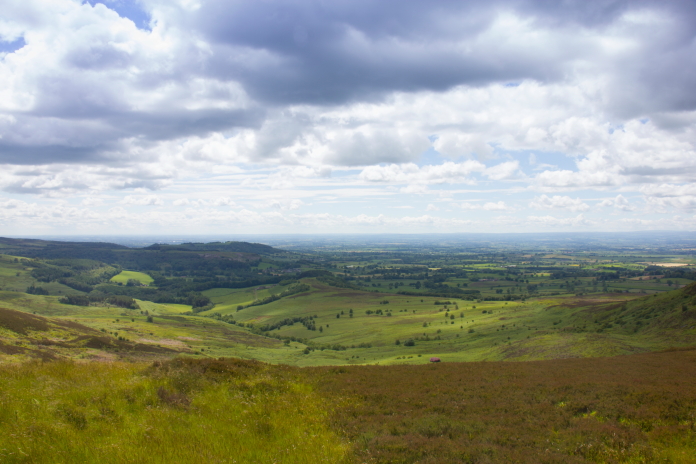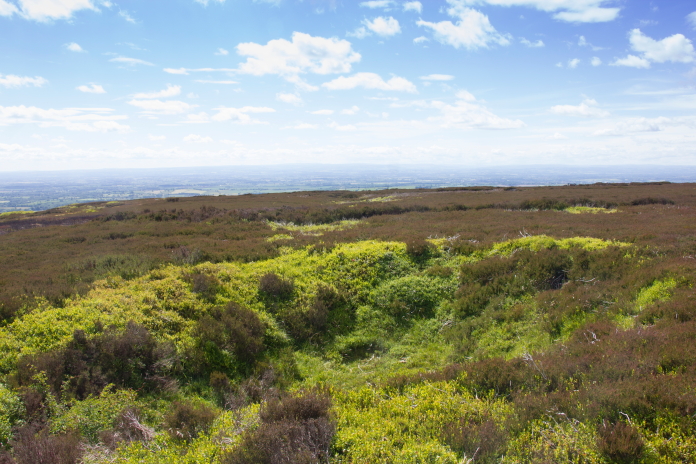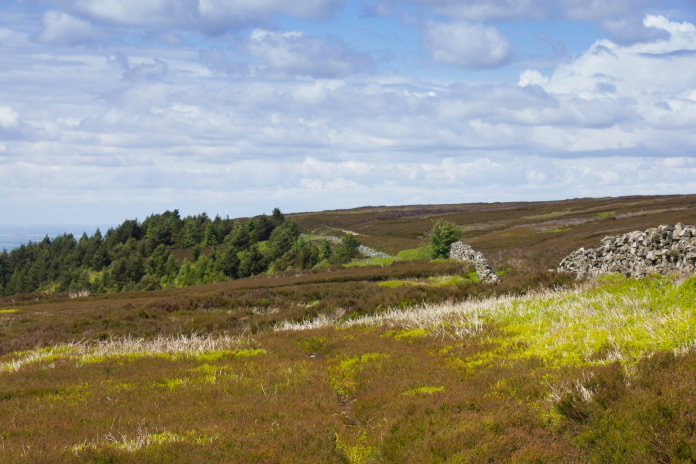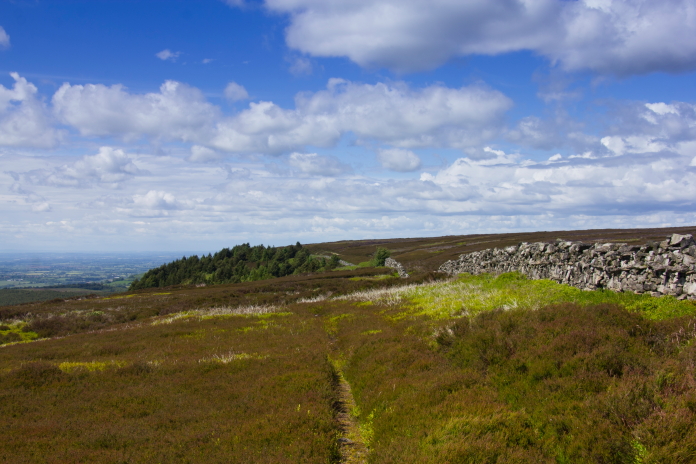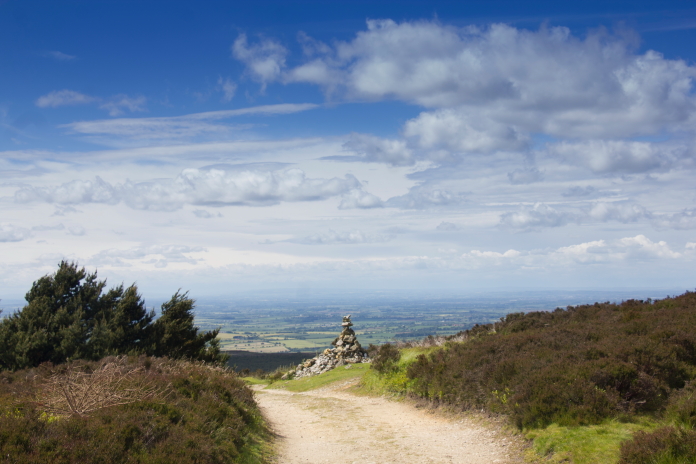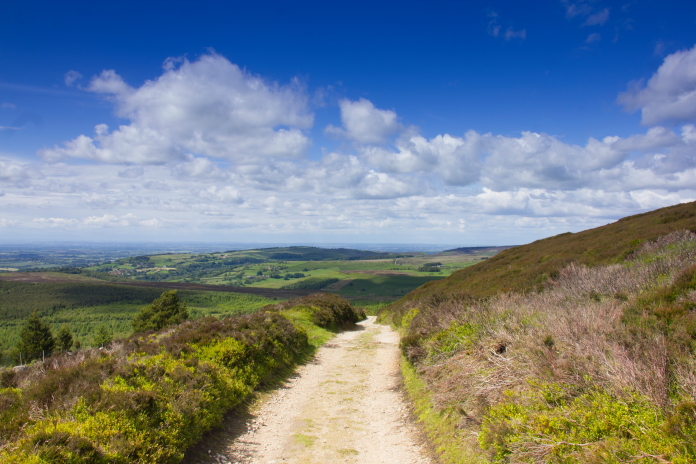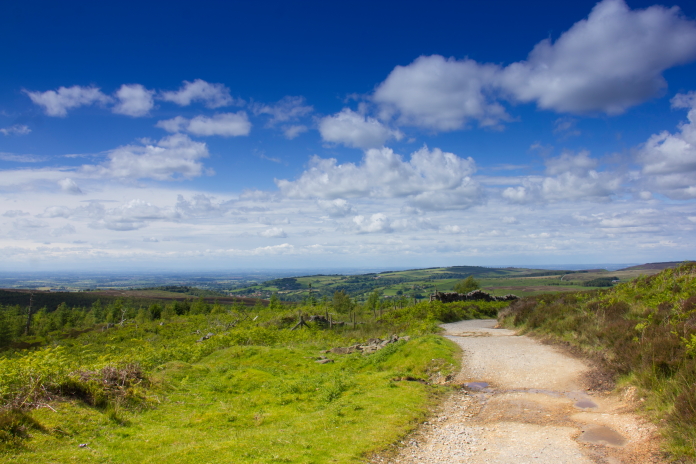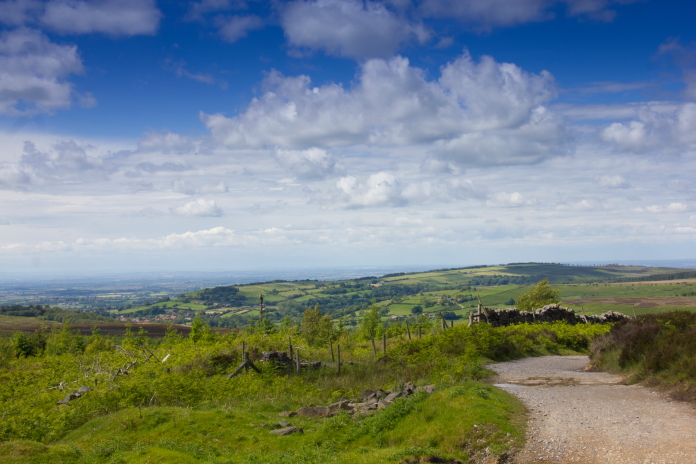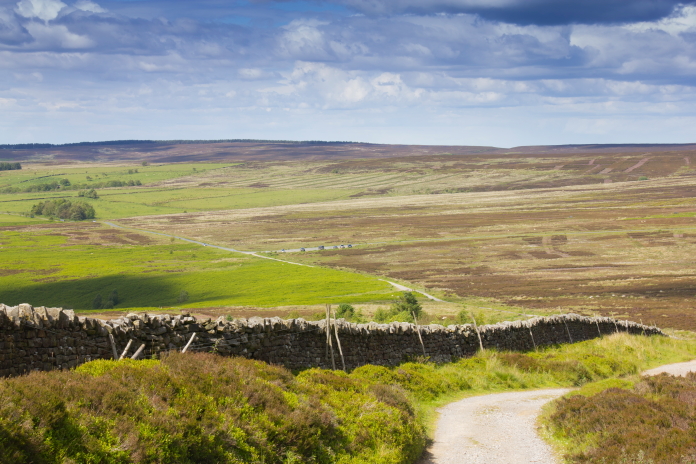Four More
HP Halifax LW334, AW Whitley T4138 and
Supermarine Spitfire SM278 on Black Hambledon,
HP Halifax LL178 and EB181
on Arden Great Moor
(Distance covered = 8.6 mile/ascent=
360M)
Other than in Wales there's not that many places left now that I haven't already visited where I can have a look for multiple crashsites in one walk. There is at least one I know about in the Peak District where there's the possibility of visiting 5 in one walk, and there's also one on the North Yorkshire Moors where there was also the possibility of finding 5.
As it's only an hours drive down the A19 from my house to reach the North York Moors I opted to do that one on this day and because it's only an hours drive I didn't have to be up ridiculously early to be at the start on my walk for 7-00am. The sun was shining and I had 10 digit grid references for all 5 sites I was hoping to visit, so it was all looking promising for it to be an enjoyable and successful day.
above and below:-Leaving the carpark at Square Corner above Ostmotherley on the western edge of the North Yorkshire Moors. The large bump ahead being Black Hambleton.
Another nice thing about this particular walk was the crashsites were nicely spaced out around an almost circular route and, after hopefully finding the last one on my itinerary there wouldn't be much of a trudge to get back to the car. Also by parking at the carpark at Square Corner half the contour lines involved in reaching the top of Black Hambleton had already been crossed.
Above and below:-Nice tracks like this meant easy going for most of the distance.
There were still some contour lines to cross but not too many.
On top of Black Hambleton.
The nice track from Square Corner ascended Black Hambleton up it's western flank, once I reached the top I had to walk over the summit plateau and drop straight off the eastern side to look for remains of HP Halifax LW334. I had a 10 digit grid reference for this one and I knew there was a memorial on site in the shape of a large cross, but despite this I spent a good couple of hours searching and still failed to find it. Perhaps the grid reference I had was inaccurate or perhaps it was just well hidden in the high bracken that covered a lot of the area. This site is very close to the carpark so it's an ideal candidate for a return visit with the grandson, in the winter when the brackens down.
The remains of the Halifax are in this area somewhere.
Slightly disappointed that the first crashsite of the day was an FTF and I could now only add a possible four to my list I hauled myself back onto the top of Black Hambleton and struck off towards crashsite number two. Instead of going as the crow flies I headed back across to the other side of the hill and picked up the nice track I had walked up on.
Back on the track, at this point I was very close to the crashsite
of Spitfire SM278 but I had decided to leave that one for on the way back.
I could have went right at this junction to visit the other two Halifax sites first but I chose to go left to the Whitley site.
View over Great Arden Moor, the other two Halifax sites are over there
Walking along the top of Locker Bank, nearing the Whitley site.
View back over to the site of Halifax LW334
that I had just failed to find.
I was confident I was going to find the Whitley site pretty easily as there is a very large scar which is visible on satellite imagery. The scar was reported to be full of a lot of very interesting small pieces from the aircraft. Walking along the track above Locker Bank I began noticing all the areas of exposed peat had been covered with what looked like hay, on closer inspection it appeared to be a mixture of heather brash and soil or compost, perhaps put there by estate workers to encourage regrowth. Unfortunately they had also covered the Whitley scar with this causing me to almost walk past it without realising. There were still some small pieces of the Whitley visible but most of it was covered with this stuff.
The Whitley scar covered in heather brash.
Although there wasn't much to see at the Whitley site thanks to the covering of heather brash at least I had found it, so I set off for the next two sites which were about a mile away and very close together. This time instead of walking back along the track I took a more direct route over the moor.
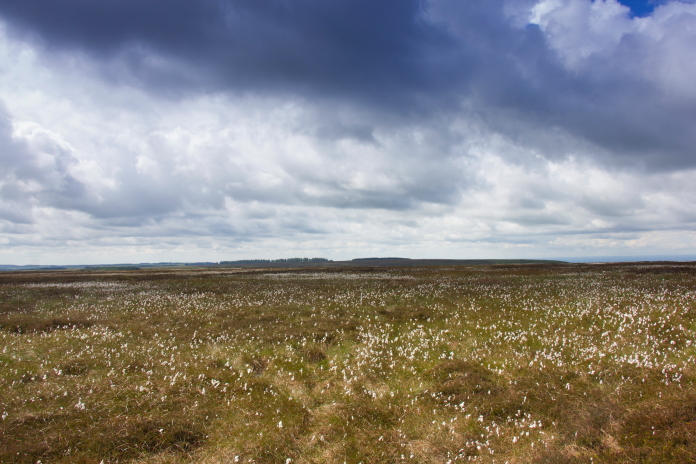
Approaching the site of the two Halifax crashes.
I was also pretty confident in finding the sites of the two Halifax's easily as again the scars of one of them could be clearly seen on satellite images and the second one was right beside a wall. Indeed I did find the first one straight away but it was scattered over the moor so a bit of searching was still needed. Once I'd determined the direction of the wreckage trail however this also proved pretty easy. The direction of this wreckage trail had also proved significant for Aviation Archaeology Historians to determine that the nearby crashsite was of another Halifax and not just more scattered wreckage from this one.
One of the scars at the crashsite of HP Halifax
LL178.
The distance between the two Halifax sites is only about 400m but whereas there are several scars and quite a few pieces of LL178 remaining there is nothing to be found of EB181. A few scraps have been found in the past but I found no sign of those, the only thing I found was some bits of wiring lying next to the wall.
Above and below:-Crashsite of HP Halifax EB181
There is a large cross at EB181's crashsite but this has been mistakenly dedicated to LL178, perhaps placed there before it was determined this was a separate crashsite from the one 400m to the north. I also investigated a large crater or sink hole a short distance to the south west of the cross which had metal buried in the bottom of it according to my metal detector, unfortunately I couldn't dig any of these bits up to confirm if they were bits of Halifax or just farming detritus.
Looking along the wall from EB181's site towards the site of LL178 which is a couple of hundred metres past the wall
as it turns west in the distance.
There were several pings on my metal detector in the bottom of this sink hole.
View of the area where both Halifax's crashed, LL178 to the left of centre and EB181 to the right of centre
both this side of the gully.
Heading back over to the nice landrover track again.
I was now able to follow this all the way back to the car, with a short diversion on the way to look for remains of a Spitfire.
Back at that junction again only approaching from the opposite direction so
this time it was right for the Whitley or left for the Spitfire.
The short diversion I mentioned was over on to that
shoulder, named on the O/S map as Pie Shaw Corner.
Somewhere along this stretch there should be a
conveniently placed gate
leading to another track, which would take me right to the Spitfire site.
This one.
View to the south from Pie Shaw corner.
I had seen photos of this site on the internet which showed a small pile of wreckage lying in a depression, but when I arrived at the grid reference I had there was no sign of anything. The photos had been taken over 10 years ago and this was a Spitfire site, so very popular with the thieving magpies! I therefore resigned myself to this one having to go on my 'FTF' list as well but just as I was about to leave I noticed a small pile of stones lying in the bottom of what I assumed was a sink hole but is in fact old mine workings..
Depression containing the small pile of stones, underneath which were some small fragments of Spitfire SM278.
Almost the entire aircraft was dumped in here and remained there until the
1970's when a scrapman had it away. Photos of this can be seen on the
'Yorkshire Aircraft' website.
Although it was a bit disappointing but not all that surprising that almost all of the Spitfire wreckage had been spirited away, I was still happy that I had found something and ended my day with 4 out of 5 crashsites found. I did contemplate nipping back over to have another look for LW334 but having already spent several hours searching for that unsuccessfully I decided against that idea.
Above and below:-Continuing north to find there was no conveniently placed gate to get back over this wall onto the landrover track.
above and next four photos. Lovely stroll in lovely weather back down the western flank of Black Hambleton to the carpark.
